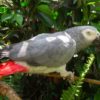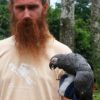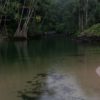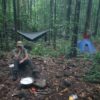It may be the most prized psittacine in the world, and one of the most familiar and unmistakable, but in the wild we know little of its life-what are its key foods; what are the best conditions for breeding success; how its populations react to harvesting and trade pressures; which are the greatest threats to its survival.
The African Grey Parrot Project support was three year a partnership by Parrots International and UK’s Manchester Metropolitan University. Simon Valle, from the MMU, served as the principle investigator.
The project focused on the island of Principe in the Gulf of Guinea, where a secure, little exploited population of grey parrots survives in the island’s remaining forests. Principe has an area of 52 sq. miles (136 sq. km). Therefore the birds are “contained within” their landscape, and can be studied for all aspects of their biology. The information that these birds yielded extremely valuable in helping understand and resolve the practical issues of management and conservation of the African Grey Parrot.
Parrots International is proud to be associated with this work on the African Grey Parrot, and committed to providing $10,000 per year to supporting the Principe study. For far too long, the Grey Parrot has been exploited by people with no knowledge of the effects of their actions on the species. Governments and conservationists have relied on hope and guesswork in the way they have approached the management of this wonderful bird. Parrots International believes supporting the scientific study of the species is the best way to ensuring its long-term security and survival!
In actuality two, complimentary, projects ran simultaneously under the guidance of Stuart Marsden of Manchester Metropolitan University and Nigel Collar of Birdlife International. One funded by Parrots International, and one funded by Loro Parque Foundation.
The first, the Simon Valle/Parrots International project, assessed the population viability of African Grey Parrot in the relatively undisturbed habitat of Principe in regard to habitat loss, disturbance, and harvest by humans for pet trade
The second, the Nat Annorbah/Loro Parque Foundation project, studied the Grey Parrot in Ghana, a highly disturbed habitat. Nat asseseds the historic and current distribution, abundance and ecology of the African Grey Parrot to make informed predictions about the sustainability of trade and land-use changes.
The resultant comparisons of the findings of the two investigators demonstrated a huge difference in abundance of the African Grey Parrot population in the highly disturbed habitat of Ghana compared to the relatively intact habitat of Principe. Based on this data, Nat published his results showing that the African Grey population in Ghana has declined 90-99% since 1992. Nat’s results were instrumental in the CITIES II listing of the African Grey, preventing the export of African Greys throughout its range.
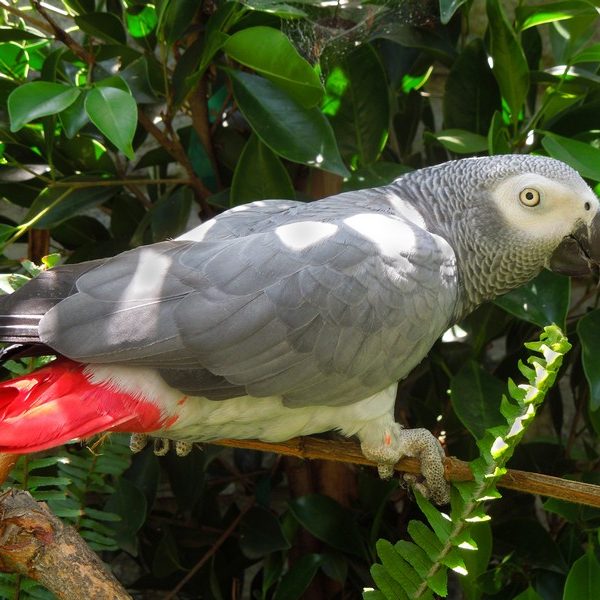 African Grey Parrot, Psittacus erithacus. Photo by M. Stafford
African Grey Parrot, Psittacus erithacus. Photo by M. Stafford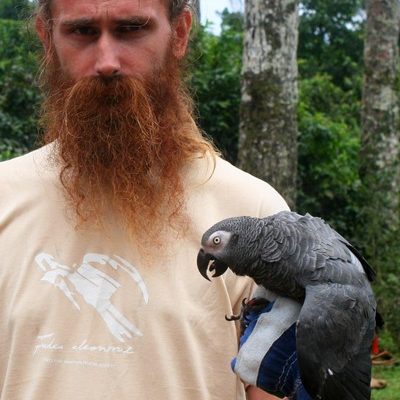 The African Grey Parrot Project was supported by Parrots International and UK’s Manchester Metropolitan University. The three year project priciple investigator, Simon Valle, PhD holds an African Grey Parrot prior to banding and release. Photo courtesy of Simon Valle
The African Grey Parrot Project was supported by Parrots International and UK’s Manchester Metropolitan University. The three year project priciple investigator, Simon Valle, PhD holds an African Grey Parrot prior to banding and release. Photo courtesy of Simon Valle The island of Principe in the Gulf of Guinea. Habitat of the Parrots International sponsored African Grey Project. Photo courtesy of Simon Valle
The island of Principe in the Gulf of Guinea. Habitat of the Parrots International sponsored African Grey Project. Photo courtesy of Simon Valle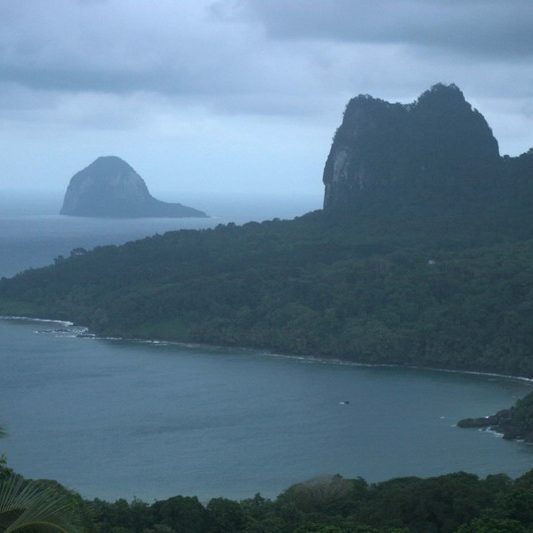 The island of Principe in the Gulf of Guinea. Habitat of the Parrots International sponsored African Grey Project. The West end is very mountainous and inaccessible, providing valuable habitat for the African Grey Parrot. Photo courtesy of Simon Valle
The island of Principe in the Gulf of Guinea. Habitat of the Parrots International sponsored African Grey Project. The West end is very mountainous and inaccessible, providing valuable habitat for the African Grey Parrot. Photo courtesy of Simon Valle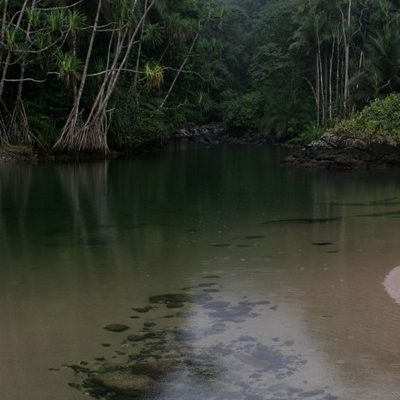 The island of Principe in the Gulf of Guinea. Habitat of the Parrots International sponsored African Grey Project. Photo courtesy of Simon Valle
The island of Principe in the Gulf of Guinea. Habitat of the Parrots International sponsored African Grey Project. Photo courtesy of Simon Valle A Project Field Camp on The island of Principe in the Gulf of Guinea. Habitat of the Parrots International sponsored African Grey Project. Photo courtesy of Simon Valle
A Project Field Camp on The island of Principe in the Gulf of Guinea. Habitat of the Parrots International sponsored African Grey Project. Photo courtesy of Simon Valle





